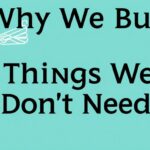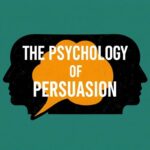What Is the Psychology of Pricing?

Pricing isn’t just about numbers or covering costs; it’s a complex dance between psychology and business strategy. At its core, the psychology of pricing explores how customers perceive prices and how those perceptions influence their buying decisions. Have you ever wondered why a product costs $9.99 instead of $10.00 or why some stores place high-priced items next to moderate-priced ones? These tactics are grounded in psychological principles that impact how you feel about a product’s value, quality, and even necessity. Understanding these factors can help businesses design pricing strategies that not only attract customers but also maximize profits, while consumers can become savvier shoppers aware of the subtle cues being used to influence their behavior.
Why Price Perception Matters More Than Price Itself
You might think that the absolute price is the only thing that matters, but in reality, how a price is perceived often outweighs the actual number. Consider this: if a pair of shoes is priced at $120, some customers might balk at it, deeming it too expensive. However, if the same pair is described as “designer, handcrafted leather shoes,” the identical $120 might suddenly feel like a bargain. This happens because of context, branding, and emotional triggers tied to pricing.
Price perception is influenced by several psychological triggers such as the perceived quality or exclusivity of a product, social proof from peer reviews or testimonials, and even the ease of the purchase decision process. Retailers leverage this knowledge to design pricing that aligns with their brand image and customer expectations. In fact, subtle changes in how prices are presented — such as adding a symbol or phrase like “limited time offer” — can change a customer’s willingness to pay.
Common Pricing Strategies Based on Psychology
To better understand the psychology of pricing, it helps to explore some common pricing strategies that businesses use to tap into consumer psychology. Here are several techniques that illustrate how pricing affects buying behavior:
- Charm Pricing: Pricing items just below a round number, such as $9.99 instead of $10.00, creates an illusion of a better deal, often called the left-digit effect.
- Price Anchoring: Presenting a higher-priced item first makes subsequent prices appear more reasonable or affordable by comparison.
- Decoy Pricing: Introducing a third, less attractive option steers consumers toward a preferred choice by comparison.
- Bundling: Grouping several products together at a combined price makes customers perceive greater value and encourages buying more.
- Prestige Pricing: Pricing products higher to evoke quality and exclusivity, appealing to status-conscious consumers.
- Free Pricing: Offering something for free (like a gift or service) that psychologically encourages purchases of the main product.
Each of these strategies capitalizes on a specific psychological reaction that affects how consumers assess price and decide whether to buy or not.
The Role of Price Anchoring in Consumer Decisions
One of the most powerful principles in the psychology of pricing is anchoring. This phenomenon occurs when people rely heavily on the first piece of information they get — in this case, the initial price they see — when making decisions. For example, if a luxury watch is “originally priced at $5,000” but now marked down to $3,500, shoppers focus on the anchor $5,000. The discounted price looks like a fantastic deal, even though $3,500 is still a substantial sum.
Anchoring works because it taps into human cognition that evaluates choices relative to a reference point rather than evaluating the absolute value. It explains why retailers often place the most expensive item first in a product lineup or display the original price next to the sale price. It’s a subtle, effective way to steer customers toward buying decisions that feel justified and smart.
Charm Pricing: Why $9.99 Can Feel Cheaper Than $10.00
There’s something fascinating about prices ending in .99 or .95, often called charm pricing. It’s one of the oldest and most widely used pricing psychological tricks. Why does $9.99 feel so much better than $10.00, even though the difference is minimal? The answer lies in how people process numbers.
When consumers glance quickly at a price, they tend to focus more on the first digit — the “left digit effect.” This means $9.99 is processed as “nine dollars and something” instead of rounding up to ten. This small difference can trigger a perception of getting a bargain, triggering immediate purchase decisions.
Brands in grocery stores, retail outlets, and online platforms all harness charm pricing to give the impression of affordability, even while increasing margins.
Decoy Pricing: Choosing the Middle Option
Have you ever been caught in a buying decision where the middle option just “feels right”? Decoy pricing, also known as the asymmetric dominance effect, is the tactic behind that. Retailers introduce a third option designed less to sell itself, but more to make the middle option look like the best value.
For example, a streaming service might offer three subscription tiers:
| Plan | Price | Features |
|---|---|---|
| Basic | $8.99/month | Standard quality, 1 screen |
| Standard | $12.99/month | HD quality, 2 screens |
| Premium | $14.99/month | Ultra HD, 4 screens |
Here, the “Standard” option is often the sweet spot. The “Basic” tier appears limited, while the “Premium” seems relatively expensive. The middle option balances cost and features perfectly — and many customers will choose it even if they initially leaned toward a cheaper or pricier plan. This strategy subtly nudges people to spend more than they may have intended.
The Influence of Emotional Pricing
Pricing doesn’t just appeal to rational thought—it reaches deep into our emotions. Emotional pricing taps into feelings such as excitement, fear of missing out (FOMO), or a desire for security and belonging. “Limited-time offers,” “flash sales,” and “only 3 left in stock” phrases rely on this emotional pull.
Emotions often overpower straightforward logic, especially when shoppers are faced with urgent decisions or special deals. Limited availability triggers a sense of scarcity, which increases perceived value. This principle is backed by research showing that scarcity drives demand. Similarly, pricing items as “introducing” or “special edition” leverages emotions by making the customer feel part of an exclusive or privileged group.
Emotional pricing tends to work best when combined with other pricing triggers, making the offer feel irresistible and pressing.
Perceived Value vs. Actual Cost: What Shoppers Really Care About
An important distinction in pricing psychology is perceived value versus the actual cost to the seller. Customers rarely focus on how much something costs to make or deliver; instead, they focus on how much value they get for their money. This distinction opens many doors for strategic pricing.
For example, a gourmet coffee shop could charge $5 for a latte because customers associate the experience — the ambiance, the quality beans, the barista skill — with higher value. Simultaneously, a major supermarket might sell a similar basic coffee for $2.00 but gain volume through lower prices.
Understanding what customers value most allows businesses to price accordingly. Whether it’s convenience, quality, status, or emotional satisfaction, pricing aligned with perceived value often leads to stronger sales.
Psychological Price Barriers and How to Overcome Them
Certain price points act as psychological barriers — a price ceiling where many buyers hesitate or opt out. For example, a jump from $49.99 to $50.00 can be a big deal psychologically. Even though it’s only a penny more, the round number creates a mental block.
Businesses often try to avoid crossing these barriers by using charm pricing or creating bundles to mask individual costs. Additionally, marketers use incentives like free shipping, extended warranties, or money-back guarantees to soften the psychological hit of higher prices.
Another strategy is to reframe the price in terms of smaller daily costs or future savings. For instance, instead of saying “$1,200 per year” for a gym membership, saying “only $3.29 per day” makes the price feel more manageable and less intimidating.
Pricing Transparency and Trust: The Psychological Impact
In today’s transparent market, honesty about pricing can become a major selling point. Customers value transparency because it signals trustworthiness. Brands that clearly justify their prices by explaining materials, craftsmanship, or social impact often create emotional bonds and justify higher prices.
On the flip side, hidden fees, unexpected charges, or lack of price clarity create negative psychological responses like distrust or frustration. This can push customers away, even if the initial price seems attractive.
Brands that combine psychological pricing with transparency often enjoy higher customer loyalty and better long-term relationships.
How Digital Shopping and Technology Influence Pricing Psychology
The rise of online shopping and digital marketplaces has transformed how pricing psychology operates. Consumers can compare prices instantly, read reviews, and hunt for deals with a simple click. This changes the dynamic, making pricing strategies more complex and interactive.
Dynamic pricing, where prices fluctuate in real-time based on demand or inventory, leverages behavioral economics and psychology to optimize profit. Flash sales, countdown timers, and “only X items left” alerts on websites are digital tools to induce urgency and FOMO emotions.
Additionally, subscription models, freemiums, and free trials capitalize on psychological principles such as loss aversion and endowment effects to hook consumers before converting them into paying customers.
Summary Table of Key Psychological Pricing Strategies
| Pricing Strategy | Description | Psychological Effect | Example |
|---|---|---|---|
| Charm Pricing | Prices ending in .99 or .95 to appear lower | Left-digit effect, perceived bargain | $9.99 vs $10.00 for a product |
| Price Anchoring | Showing high reference price first | Reference-based decision making | Original price $500, sale $350 |
| Decoy Pricing | Introducing an option to steer choice | Asymmetric dominance effect | Streaming plans: Basic, Standard, Premium |
| Bundling | Combining products/services for one price | Increased perceived value | Meal combos, software packages |
| Prestige Pricing | Pricing high to signal exclusivity | Status and quality perception | Luxury watches and cars |
| Free Pricing | Offering something gratis to encourage purchase | Reciprocity and perceived value | Buy one get one free, free trials |
Final Thoughts on the Psychology of Pricing
When pricing products or services, it’s crucial to remember that numbers alone don’t dictate success. The psychology of pricing reveals the intricacies behind consumer decisions, showing how small changes in presentation, context, and framing can significantly affect perceptions of value and affordability. By tapping into psychological principles like anchoring, charm pricing, emotional triggers, and social proof, businesses can craft pricing strategies that both resonate with customers and drive profits. At the same time, consumers who understand these techniques become empowered to make smarter, more conscious purchasing decisions. Pricing isn’t just a business tool — it’s a subtle language that speaks directly to the human brain, blending emotion, logic, and social influence in ways that shape the world of shopping every day.
Conclusion
In the end, the psychology of pricing is about understanding people—not just numbers. It’s about knowing what drives customer behavior, how perception shapes value, and how subtle cues can influence what shoppers decide to buy. Whether you are a business owner looking to optimize revenue or a curious consumer wanting to make better decisions, recognizing the psychological forces behind pricing gives you a significant advantage. Pricing strategies rooted in psychology create powerful connections between products and buyers, making the price tag more than just a cost — it becomes a meaningful part of the shopping experience. Armed with this knowledge, you can navigate the marketplace with greater confidence and insight, seeing beyond prices to the behaviors and beliefs they shape.




















